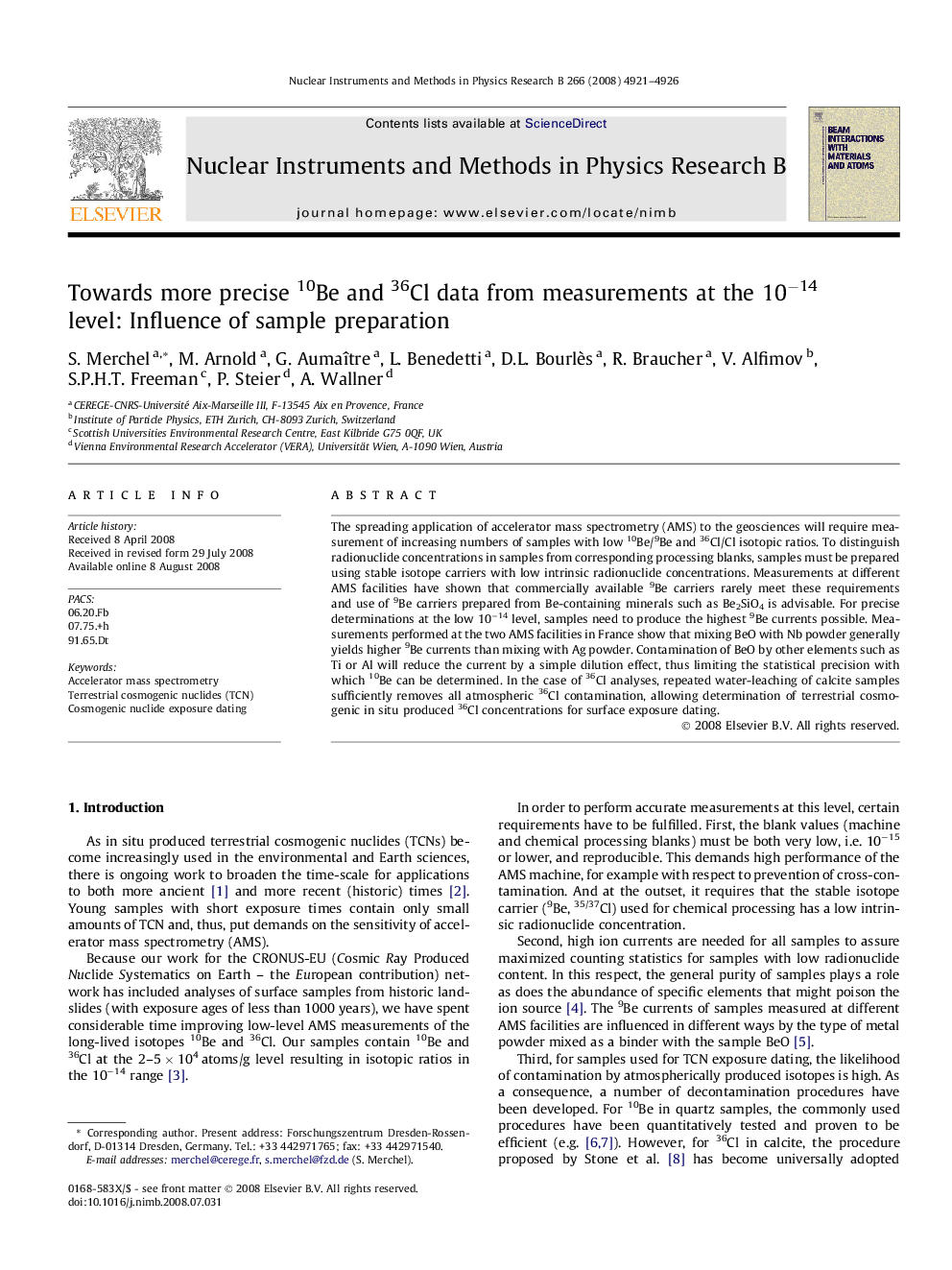| Article ID | Journal | Published Year | Pages | File Type |
|---|---|---|---|---|
| 1684531 | Nuclear Instruments and Methods in Physics Research Section B: Beam Interactions with Materials and Atoms | 2008 | 6 Pages |
The spreading application of accelerator mass spectrometry (AMS) to the geosciences will require measurement of increasing numbers of samples with low 10Be/9Be and 36Cl/Cl isotopic ratios. To distinguish radionuclide concentrations in samples from corresponding processing blanks, samples must be prepared using stable isotope carriers with low intrinsic radionuclide concentrations. Measurements at different AMS facilities have shown that commercially available 9Be carriers rarely meet these requirements and use of 9Be carriers prepared from Be-containing minerals such as Be2SiO4 is advisable. For precise determinations at the low 10−14 level, samples need to produce the highest 9Be currents possible. Measurements performed at the two AMS facilities in France show that mixing BeO with Nb powder generally yields higher 9Be currents than mixing with Ag powder. Contamination of BeO by other elements such as Ti or Al will reduce the current by a simple dilution effect, thus limiting the statistical precision with which 10Be can be determined. In the case of 36Cl analyses, repeated water-leaching of calcite samples sufficiently removes all atmospheric 36Cl contamination, allowing determination of terrestrial cosmogenic in situ produced 36Cl concentrations for surface exposure dating.
